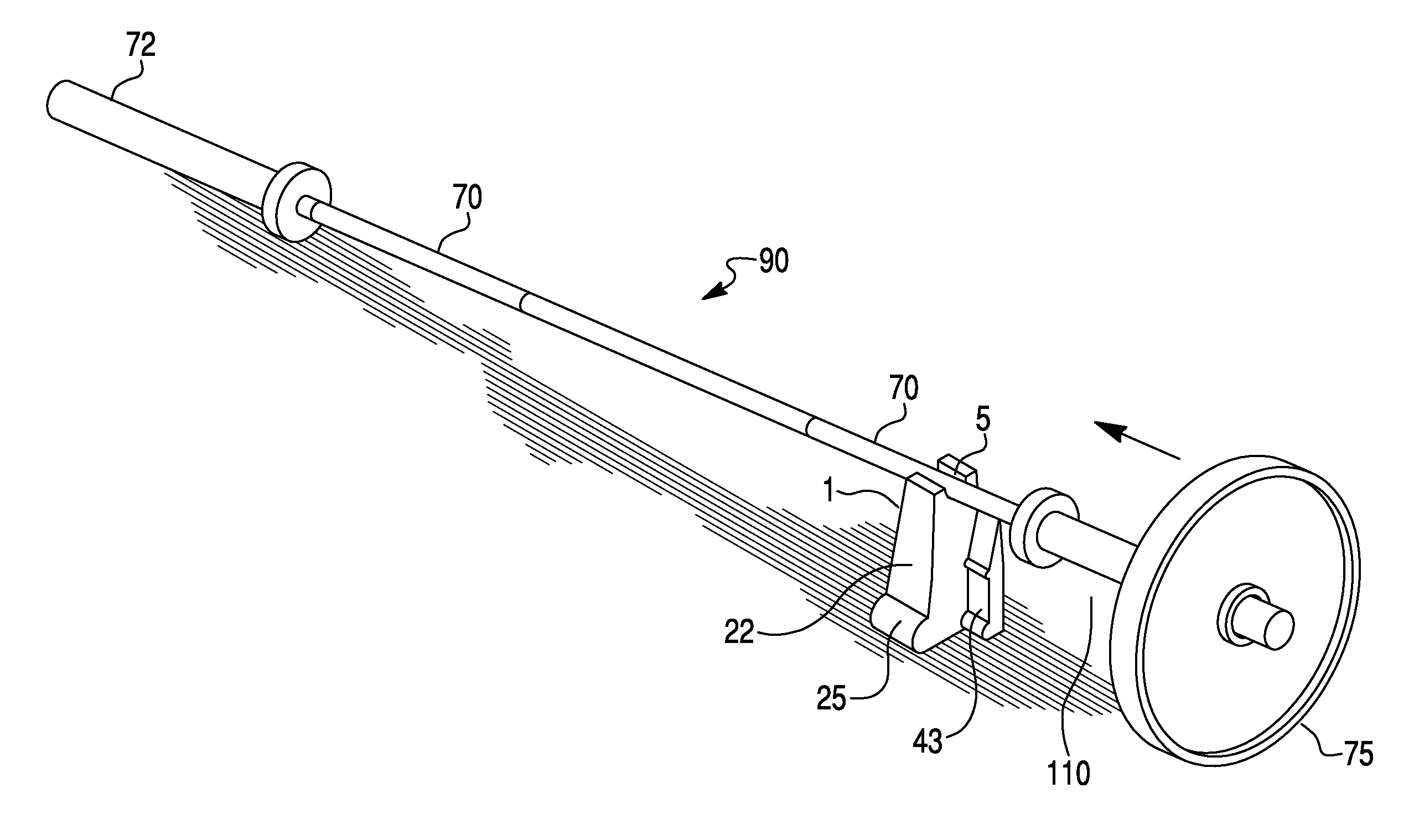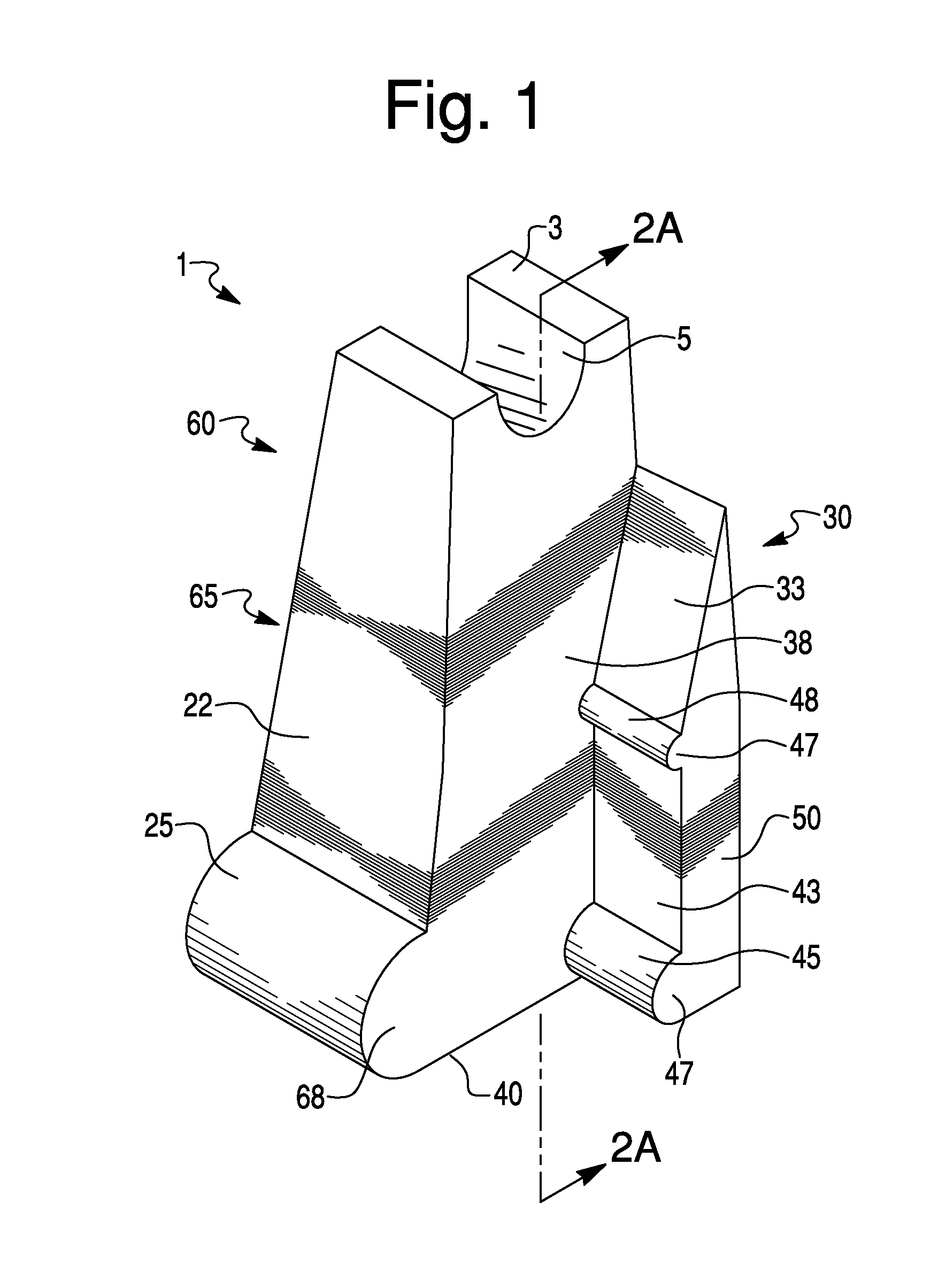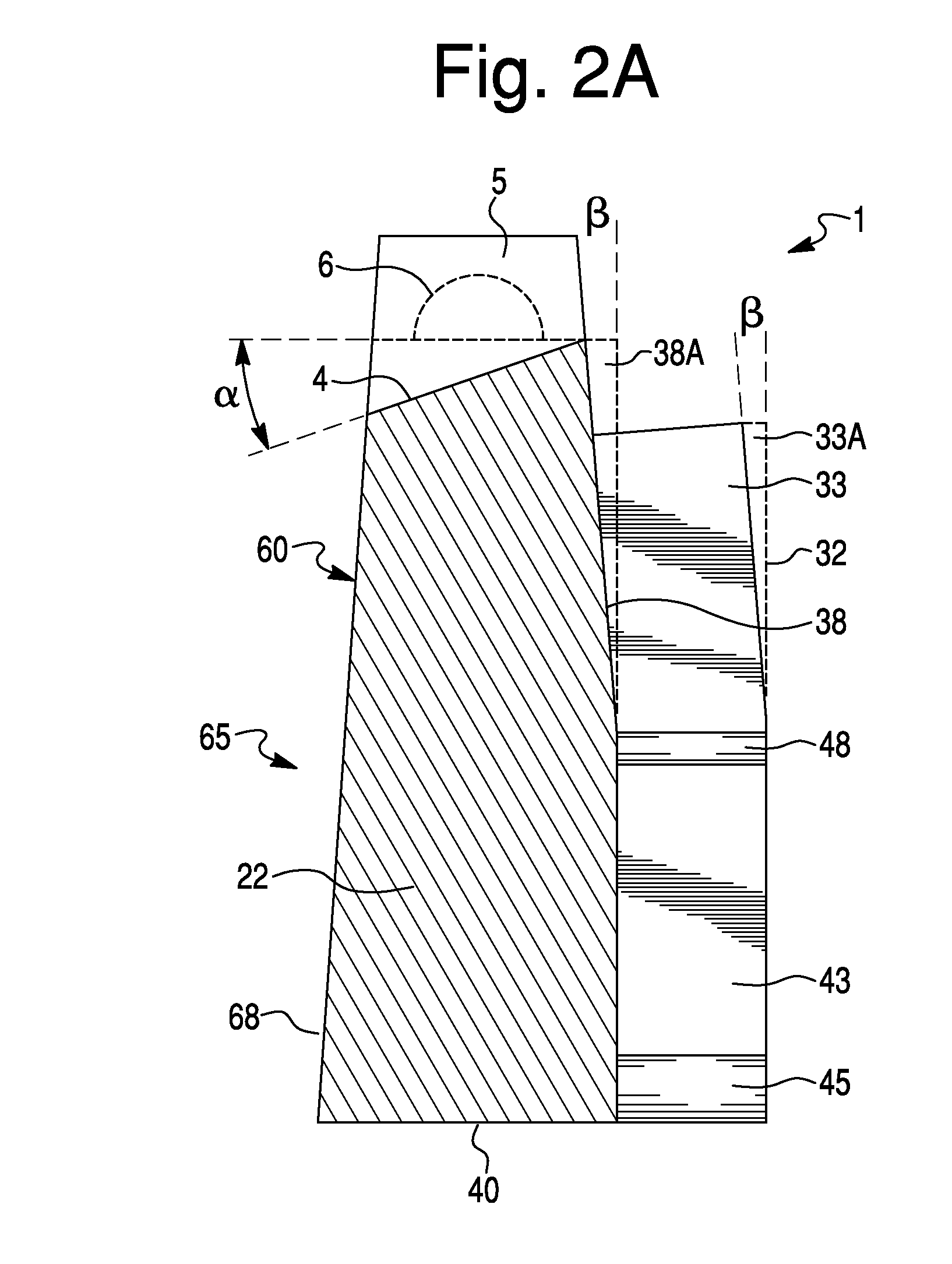Barbell Safety Device
a safety device and barbell technology, applied in the field of devices supporting barbells, can solve the problems of difficult to safely remove the weight plates from the barbell, difficult to add and remove weight plates, and users often do not perform proper warm up repetitions, so as to safely remove the weight plates, safely secure the weight plates, and efficiently load and unload weight plates
- Summary
- Abstract
- Description
- Claims
- Application Information
AI Technical Summary
Benefits of technology
Problems solved by technology
Method used
Image
Examples
Embodiment Construction
[0017]The invention is directed toward a lightweight and portable barbell safety device that facilitates the support of the barbell and the loading or unloading of weight plates onto or from a barbell.
[0018]The barbell safety device is shown in FIGS. 1, 2A and 3, wherein the barbell safety device 1 has a first base 40 that allows device 1 to be placed in a stable vertical position. Device 1 includes an anchoring means 5 that holds and elevates bar 70 of barbell 90, thus propping up end 110 of barbell 90 as shown in FIG. 2B. A spacer 22 separates anchoring means 5 apart and above base 40. Additionally, spacer 22 may be perpendicular to base 40. Spacer 22 has one end 68 that is adjacent to base 40, a mid-section 65, and a distal end 60 that is either adjacent to or includes anchoring means 5. Anchoring means 5 is located on top 3 of distal end 60. Spacer 22 has a minimal vertical length of 5-14 inches, preferably 6-12 inches, and most preferably 4-10 inches. Anchoring means 5 is in th...
PUM
 Login to View More
Login to View More Abstract
Description
Claims
Application Information
 Login to View More
Login to View More - R&D
- Intellectual Property
- Life Sciences
- Materials
- Tech Scout
- Unparalleled Data Quality
- Higher Quality Content
- 60% Fewer Hallucinations
Browse by: Latest US Patents, China's latest patents, Technical Efficacy Thesaurus, Application Domain, Technology Topic, Popular Technical Reports.
© 2025 PatSnap. All rights reserved.Legal|Privacy policy|Modern Slavery Act Transparency Statement|Sitemap|About US| Contact US: help@patsnap.com



